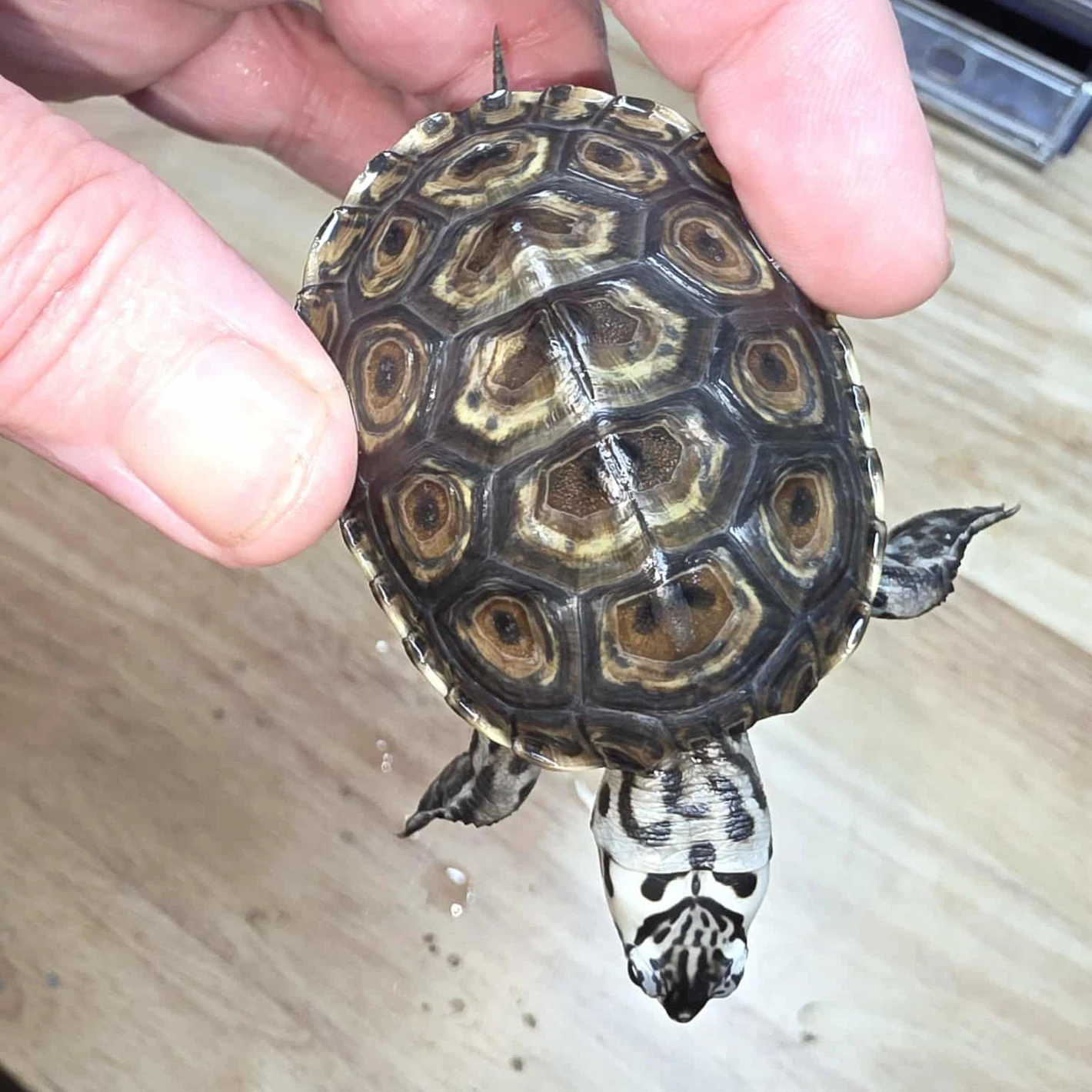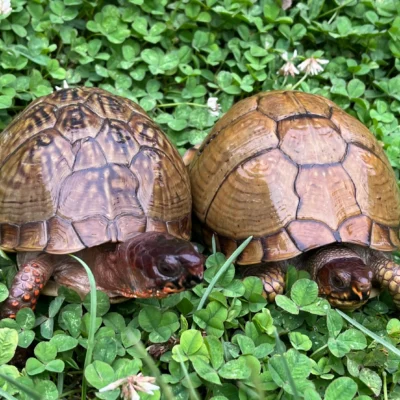Buy baby Diamondback Terrapin online.
Baby Terrapins—especially hatchling Diamondback Terrapins—are delicate, aquatic reptiles that require precise care and ethical sourcing. Whether you’re listing, raising, or educating your audience, here’s a deeper dive into their biology, setup, and market positioning:
🐢 Hatchling Profile: Baby Terrapins
| Attribute | Details |
|---|---|
| Size | ~1 inch (2.5 cm) shell length at hatching |
| Age Range | 0–6 months |
| Lifespan | 25–40 years in captivity |
| Sexual Maturity | ~5–7 years |
| Behavior | Fragile, shy, and highly aquatic in the early months |
They’re born with a yolk sac that provides nutrition for the first 5–7 days. During this time, they do not eat and should not be disturbed.
🧬 Species Focus: Diamondback Terrapins (Malaclemys terrapin)
- Subspecies: Northern, Ornate, Concentric, Mississippi
- Habitat: Brackish marshes and estuaries
- Shell: Gray to olive with concentric rings or spots
- Skin: Pale gray with black speckling; hatchlings often show more contrast
They’re the only North American turtle species that lives exclusively in brackish water, making them unique among aquatic reptiles.
Buy baby Diamondback Terrapin online
🏡 Hatchling Setup
- Tank Size: Minimum 80 liters (~20 gallons) for 1–2 hatchlings
- Water Depth: Slightly deeper than shell width; shallow enough for easy basking access
- Temps:
- Water: 78–82°F (25–28°C)
- Basking: 88–92°F (31–33°C)
- Lighting: UVB + basking bulb essential for shell and bone development
- Filtration: Gentle sponge or low-flow filter to avoid strong currents
- Substrate: Bare bottom or fine sand; avoid gravel that can be ingested
Decorate with rocks, sand, and artificial plants—real plants will be eaten.
🍽️ Diet & Feeding
- Start Feeding: ~7 days after yolk sac detaches
- Staples:
- Finely chopped earthworms, bloodworms, brine shrimp
- Hatchling turtle pellets (soaked)
- Feeding Frequency: Daily in small amounts
- Supplements: Calcium block or cuttlebone in tank
Avoid overfeeding—baby terrapins are prone to shell deformities and organ stress if fed too much protein too early.
🧠 Behavior & Temperament
- Shy but curious: Will explore once acclimated
- Sensitive to handling: Best observed, not touched
- Responsive to routine: Thrive with consistent lighting and feeding schedules
They’re highly impressionable in early months—good husbandry now sets the stage for long-term health.






Reviews
Clear filtersThere are no reviews yet.